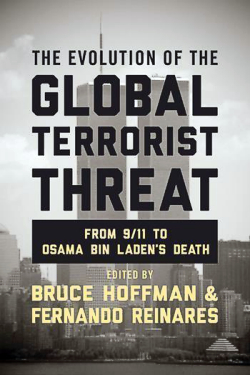 What Is Palestine?
What Is Palestine?
HE London political
commentator Michael Burleigh has entered the fray concerning
the concept of Palestine as a state or nation. "There has
never been an historic Palestine," he maintains, "except as
a Roman province, though there certainly were two ancient
Jewish kingdoms long before that."
He points out that "Palestine had
no separate identity during the centuries of Ottoman rule
either, in the latter part of which, from the 1880s onwards,
the 25,000 Orthodox Jews who lived in Jerusalem were
augmented by two major waves of East European immigrants who
farmed on the plains."
In his illuminating account of
global insurrection (in the face of decolonization and the
Cold War) from 1945 to 1965 titled,
SMALL WARS, FARAWAY
PLACES, Burleigh devotes a chapter discussing the roots
of Arab nationalism and the genesis of the modern Jewish
homeland that is relevant to todayís headlines.
If anything, Burleigh is an equal
opportunist, finding much to condemn among the British, the
Jews and the Americans. He fulminates against Harry Trumanís
advisers whom he paints as racists towards the Arabs; the
malignancy of Zionist terrorism (Irgun, Stern Gang) that
"murdered" 373 people in Jerusalem, Rome and London; "the
Zionist screenwriter Ben Hecht" whose Exodus movie
"was played up in an inflammatory way in the U.S."; and
Stalinís initial attempt to lure the nascent state of Israel
into the Iron Curtain as he was mindful that "interwar
Palestine had the largest Community party in the Middle
East, dominated by its Jewish members," plus the Zionist
kibbutzim bore a generic resemblance to Soviet collective
farms, and being aware how rife pro-Nazi sympathies had been
in the Arab world. "No wonder the Soviet Union was the first
country to recognize Israel," Burleigh writes.
Israel eluded Stalinís grasp and
repulsed five Arab armies that rumbled through the West Bank
to sweep the Jews into the sea and wipe the state off the
face of the map. (Penguin Books, 608 pages,
Amazon.com Price: $15.93)
 Spread Of Worldwide Terror
Spread Of Worldwide Terror
NE of the most intensive
studies focused on world terrorism in the decade following
9/11 is
THE EVOLUTION OF THE GLOBAL TERRORIST THREAT
which I have been absorbing over several weeks.
This beefy book is edited by two
knowledgeable scholars: Bruce Hoffman, a former
counterterrorism scholar at the CIA and currently director
of the Center for Security Studies at Georgetown
Universityís Walsh School of Foreign Service, and Fernando
Reinares, a political science/security studies professor at
Universidad Rey Juan Carlos in Madrid. Both have been
engaged in counterterrorism policy for their respective
governments.
Their book is crammed with
countless quotes from American players in all the major
theaters from the Madrid train bombings to the Van Gogh
murder in Amsterdam, both in 2004, to the 2008 attacks in
Mumbai, India, and the 2010 suicide attacks in Kampala,
Uganda. The authors recount and analyze a total of 24
terrorist operations and offensives that rattled the globe
from 9/11 to Osama bin Ladenís death.
Even though the central al-Qaeda
leadership (i.e. Osama bin Laden) has been eliminated, the
threat to attack their "most precious target, the U.S.
homeland" remains constant. The next challenge may not
originate in the Afghanistan/Pakistan-based al-Qaeda central
but, rather, one of its franchises around the world.
(Columbia University Press, 696 pages,
$45.00
Amazon.com Price: $40.50)